Beside the oldest known labyrinth with 7 circuits (called the classical one) there are even other variations. Tony Phillips as a mathematician dealed with the question and found 42 different possibilities. Till present 41 of it have not yet appeared as a historical labyrinth.
Andreas Frei has still presented in an article (see below) six of the very interesting examples.
I would like to introduce here 8 labyrinths from the 42 possible variations, according to other criteria. Including the classical one and one still presented by Andreas Frei (Fig. 3), but 6 other, up to now unknown examples.
As is well known (at least now) one enters a labyrinth only on an odd circuit, that is lane 1, 3, 5 or 7. The examples with entrance on the 1st or 7th lane are not so interesting, hence, I have dropped them. Under the aspects of movement and design I like best the access on the 3rd or 5th lane. In the classical labyrinth one begins with circuit 3.
One is immediately inside the labyrinth, is quickly nearby the center, and changes direction in a pendular movement. Quite as Hermann Kern quoted it in his form principles for a labyrinth under >principle detour<.
Since thousands of years there is only one type for a 7 circuit labyrinth known and used until today. This classical labyrinth as a geometric figure has surely been developed from a seed pattern. Maybe one or another new type will appear under the labyrinths of our time? There is still development potential.
The distinction of a type happens through the path sequence. It describes best the rhythm of the movement.
In the drawings the walls (in black) and the paths (in white) are equally wide. The middle amounts to the four-fold path’s width. The vertical alignment adjusts to the center axis.
The rectangular diagram is the picture of the path (Ariadne’s thread, here in black) in linear shape and shows the internal structure of the labyrinth. You may read it from the left tot the right.
The last drawing in my list is the only further self-dual one. It also belongs to the group of the six very interesting labyrinths in the article of Andreas Frei.
It is very dynamic and the steps have a bigger spread than in the well-known classical labyrinth. The step sequence, the shift from one circuit to another, is as follows 5f(orwards)-1f-1f-3b(ackwards)-3b-1f-1f-5f. You may read this from the path sequence 0-5-6-7-4-1-2-3-8.
In the well-known classical labyrinth with the path sequence 0-3-2-1-4-7-6-5-8 the step sequence is 3f-1b-1b-3f-3f-1b-1b-3f.
One can experience the rhythm and the “feeling” of a labyrinth by walking it.
Related Post
Related Link

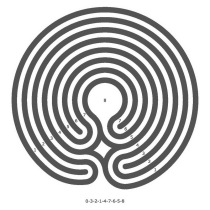
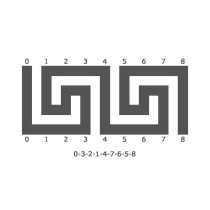


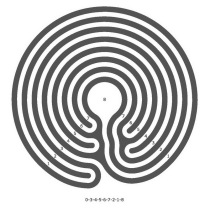
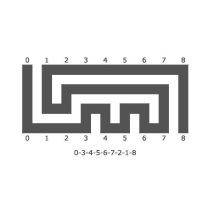



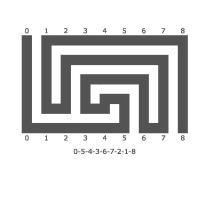
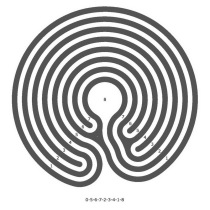

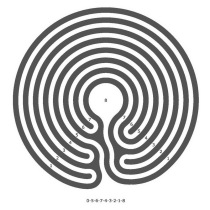
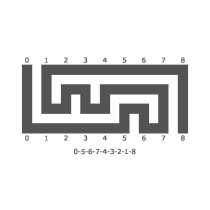

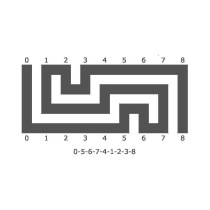
Pingback: How to make a Classical (Minoan) Labyrinth from a Medieval Labyrinth, Part 2 | blogmymaze
Pingback: How to make a Classical (Minoan) Labyrinth from a Medieval Labyrinth, Part 1 | blogmymaze
Pingback: How to Make a Circular Classical 7 Circuit Labyrinth and Seven New (up to know unknown) Circular 7 Circuit Labyrinths in Sand | blogmymaze
Pingback: How to Make Seven New (up to now unknown) 7 Circuit Labyrinths on Snow | blogmymaze
Pingback: Easter 2013 | blogmymaze